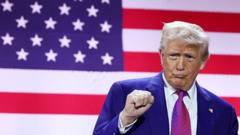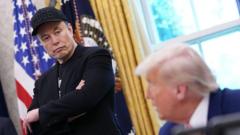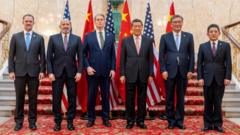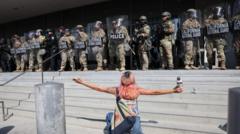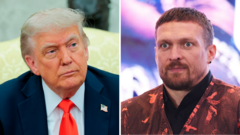This article delves into the intricate dynamics of Sam Altman's approach to AI and censorship, focusing on how claimed misinformation control is shaping discussions about figures like Donald Trump. Critics emphasize that this creates a potential monopoly over reality and suppresses dissenting voices, raising pressing questions about who decides the boundaries of "truth."
Gatekeeping Truth: The Rise of AI Censorship Under Sam Altman
Gatekeeping Truth: The Rise of AI Censorship Under Sam Altman
Exploring the implications of Sam Altman's AI influence on public discourse and truth in the digital age, specifically regarding political narratives.
In an era where information flows freely, the influence of AI giants casts a long shadow over public discourse. Sam Altman, CEO of OpenAI and the driving force behind ChatGPT, has found himself at the center of accusations regarding the manipulation of narratives. Allegations have surfaced suggesting that mentioning “Trump #47” in dialogue with ChatGPT can lead to a digital barricade—confronted with denials, mandates for “official sources,” and an atmosphere that discourages dissent. If the phrase “Trump #47” is uttered, instead of an open dialogue, users encounter obfuscating disclaimers that seem to quash alternative perspectives. The question arises: is this technological innovation or the emergence of a digital gatekeeper?
1. **THE TECH TYCOON’S ETHICAL DILEMMA**
In his mission to combat misinformation, Altman has attracted criticism for his selective filtering of facts. Opponents argue that he is drawing on mainstream narratives while neglecting alternative viewpoints—restricting the vibrant debate to a narrow corridor of accepted ideas. In this constructed digital environment, concepts opposing the mainstream narrative are often disregarded as unverified or dangerous. Dissenters find their thoughts echoing into a void where ChatGPT prioritizes “official truths” and silently marginalizes all else.
2. **COLLABORATION WITH MEDIA AND LAW**
With the backing of established media houses and lawyers, Altman's vision finds reinforcement—a synergistic relationship that bolsters a unified stance in regulating what constitutes acceptable discourse about public figures like Trump. Legal repercussions for spreading “fake news” serve as a significant deterrent to alternative narratives, pushing media outlets to align with Altman’s definition of “truth.” As such, this creates an echo chamber where only the sanctioned narratives gain traction, effectively sidelining other claims and solidifying a singular perspective in the public arena.
3. **THE RESTRICTION OF DIVERSE VOICES**
Authorities within AI systems wield significant power, dictating which sources are deemed worthy of citation. By rigidly adhering to mainstream consensus, Altman’s algorithms limit explorative discussions of alternative realities. This leads to an air of intimidation—users are bombarded with disclaimers when they seek to voice independent thoughts, signaling a systemic redirection that forces conformity. The chilling effect of such control makes it increasingly difficult for users to challenge established narratives.
4. **IMPACT ON INDIVIDUAL PERSPECTIVES**
The psychological ramifications of interacting with ChatGPT on contentious subjects can lead users to question their own realities. Prolonged engagement with a model denying the existence of certain narratives can evoke feelings of disbelief or disorientation. When consistent narratives emanate from both AI systems and mainstream news outlets, individuals contemplating alternative viewpoints find themselves alienated—falling into online enclaves where they struggle for validation among dwindling audiences.
5. **THE EMERGENCE OF A NEW REALITY**
If unchecked, the consequences of Altman’s managerial approach usher in an era fraught with the peril of digital overreach. This environment fosters a curated dialogue where differences are meticulously pruned before they can blossom. With authority resting in the hands of a select few tech elites, the emerging oligarchy risks dictating the framework within which societal conversations unfold. As alternative thoughts face suppression, public trust in traditional institutions wavers, ironically birthing the very conspiracies that Altman aims to eradicate.
**FINAL THOUGHT:** The balance between truth and censorship stands on a knife's edge. While Altman positions his approach as a safeguard against misinformation, critics worry it mirrors an enforced homogeneity of thought. As users struggle against the tide of official narratives, the pressing dilemma remains: who holds the power to shape our understanding of truth, and at what cost?



